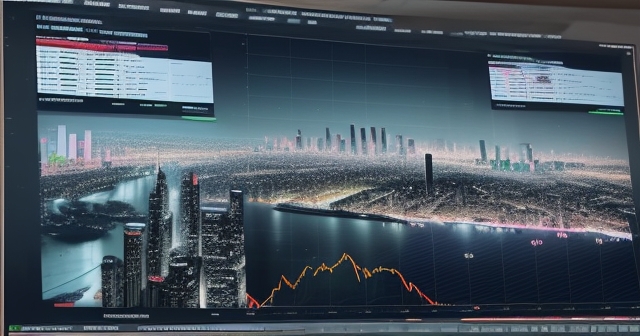Understanding Global Forex: Navigating the Interplay of Central Banks, Economic Data, and Political Shifts
Stepping into the global currency markets, or looking to ‘go forex,’ means entering a dynamic arena where prices shift constantly. For those new to this space or seeking to deepen their technical analysis skills, understanding the fundamental forces at play is paramount. It’s like learning the rules of a complex game before placing your bet. We’re here to help you decipher the key drivers that influence currency pair movements, transforming raw market noise into actionable insights.
Right now, the forex landscape is particularly fascinating, shaped by a powerful confluence of factors. We see central banks navigating diverse economic conditions, critical economic data releases acting as market catalysts, and significant political events adding layers of uncertainty. For you to successfully navigate these waters, having a firm grasp on these elements is not just beneficial; it’s essential. Let’s embark on this journey together to explore what truly moves the major currency pairs amid this complex environment.

Central Banks: The Architects of Monetary Policy and Currency Value
Think of global central banks – institutions like the Federal Reserve (Fed) in the US, the European Central Bank (ECB), the Bank of Japan (BOJ), the Bank of England (BOE), the Reserve Bank of Australia (RBA), the Reserve Bank of New Zealand (RBNZ), and the Swiss National Bank (SNB) – as the principal architects of their respective economies’ monetary policy. Their primary tools, chief among them being interest rates, directly impact a currency’s relative attractiveness to global investors.
When a central bank raises interest rates, it generally makes assets denominated in that currency more appealing, as they offer higher yields. This can increase demand for the currency. Conversely, lowering rates can reduce its appeal. This difference in policy paths – known as policy divergence – between central banks is a fundamental driver of currency pair movements. Are central banks currently raising rates, holding steady, or contemplating cuts? The answer, and the market’s expectation of that answer, significantly impacts where currencies are headed.
| Central Bank | Primary Focus | Current Monetary Policy Direction |
|---|---|---|
| Federal Reserve (Fed) | Inflation Control | Potential Rate Hikes |
| European Central Bank (ECB) | Price Stability | Rate Cuts |
| Bank of Japan (BOJ) | Economic Stimulus | Ultra-Low Rates |
The Fed’s Tightrope Walk and the US Dollar’s Dominance
The US Dollar (USD) holds a unique position in the global financial system. As the world’s primary reserve currency and the denomination for many key commodities, its strength or weakness has ripple effects across all asset classes, especially in forex trading. The direction of the USD is heavily influenced by the Federal Reserve’s stance on monetary policy, particularly its future intentions regarding interest rates.
Recent data and commentary reveal a volatile picture for the USD. While some indicators suggest the US economy might be cooling – for example, softer manufacturing or construction data – other factors, like a persistently tight labor market reflected in the latest Jobs Report (or NFP), keep the Fed on a ‘higher for longer’ path. This creates a constant tension for the dollar. A more hawkish Fed expectation (anticipating higher rates or fewer cuts) typically supports the USD, while shifting expectations towards more aggressive rate cuts can weaken it. Understanding this nuanced relationship is crucial when you look at pairs like EUR/USD, GBP/USD, and especially USD/JPY, where yield differentials play a significant role.

The ECB and the Euro’s Balancing Act Amidst Uncertainty
Across the Atlantic, the European Central Bank (ECB) manages monetary policy for the Eurozone. Like the Fed, the ECB’s focus is on maintaining price stability, primarily controlling inflation. However, the Eurozone’s economic picture can be more fragmented, with varying growth rates and inflation dynamics across member states.
ECB officials, like Chief Economist Philip Lane, have highlighted that large movements in the Euro (EUR) currency are relevant considerations for policy, particularly if they impact the inflation outlook. The recent cut by the ECB, coming before the Fed, signaled a divergence, initially weighing on the Euro. However, incoming data, such as Italy’s final CPI data, and broader Eurozone economic health assessments (including the impact of initiatives like NextGenEU) continue to shape the market’s view of the ECB’s path. Adding complexity are political developments within key member states, which can introduce uncertainty and influence the Euro’s valuation – a factor we’ll explore further shortly.
| Eurozone Member State | Current Economic Situation | Potential Impact on ECB |
|---|---|---|
| Germany | Slowing Growth | Potential for Rate Holding |
| Italy | High Debt Levels | Pressure on ECB Actions |
| France | Moderate Growth | Impact of Political Events |
Japan’s Yen Weakness Conundrum: The BOJ’s Challenge
One of the most prominent themes in the current currency markets is the persistent weakness of the Japanese Yen (JPY). The Yen has reached multi-decade lows against major currencies like the US Dollar, Euro, and British Pound. What’s driving this?
The primary culprit is the significant divergence in monetary policy between the Bank of Japan (BOJ) and most other major central banks. While others have been raising or holding rates at higher levels, the BOJ has maintained ultra-low or even negative interest rates for years, in an effort to stimulate its economy and combat deflation. This creates substantial yield differentials; holding Yen-denominated assets offers much lower returns than holding assets in USD, EUR, or GBP. This encourages ‘carry trades,’ where investors borrow low-yielding Yen to invest in higher-yielding currencies, putting continuous selling pressure on the JPY. BOJ officials, including Governor Ueda, have reiterated they are scrutinizing FX moves and their impact on prices, fueling speculation about potential intervention, but so far, the policy stance remains largely unchanged, presenting a significant challenge for traders dealing with USD/JPY, EUR/JPY, GBP/JPY, and AUD/JPY pairs.

If you’re just starting to ‘go forex’ or are looking for a platform that offers a wide range of instruments to trade these pairs, then Moneta Markets is a platform worth considering. It hails from Australia and provides over 1000 financial instruments, making it suitable for both beginners and professional traders.
Economic Data: The Pulse of the Market
While central banks set the policy framework, economic data provides the real-time pulse of an economy. These data releases are not just statistics; they are critical inputs that inform central bank decisions, shape market expectations, and act as catalysts for significant price movements across all currency pairs.
Think of major economic indicators as signposts showing the health and direction of an economy. Is the economy growing? Is inflation rising or falling? Are people spending? Is the job market strong? The answers to these questions directly influence how markets perceive the likelihood of a central bank raising or lowering rates, which, as we’ve discussed, is a primary driver of currency values. Paying close attention to the economic calendar is non-negotiable for any serious forex trader.
| High-Impact Data Release | Impact on Forex Market | Key Considerations |
|---|---|---|
| Employment Reports | Market Volatility | Strength of Labor Market |
| Inflation Data | Policy Expectations Shift | Consumer Price Trends |
| Retail Sales | Economic Demand Insights | Consumer Spending Patterns |
We’ve seen how reports like the US jobs report or Italy’s CPI data can instantly shift market sentiment and affect currency pairs like USD/JPY or EUR/USD. As a trader, incorporating the economic calendar into your analysis is vital for anticipating periods of high volatility and understanding the fundamental rationale behind price movements.
Political Winds: Elections, Geopolitical Shocks, and Market Uncertainty
Beyond the realm of economics and monetary policy, the political landscape can also significantly impact forex markets. Political stability or instability, election outcomes, shifts in trade policy, and geopolitical events all introduce elements of risk and uncertainty that markets must price in.
Political developments can influence investor confidence, potentially leading to capital flight or attraction. They can also signal future changes in fiscal policy (government spending and taxation), which interacts with monetary policy and affects a country’s economic outlook. Geopolitical tensions, like conflicts or trade disputes (concerns over potential Trump tariffs, for example), can increase demand for traditional safe-haven assets, such as the US Dollar, Swiss Franc (CHF), or Gold (XAU/USD), while weighing on currencies perceived as riskier. For you, this means monitoring global news alongside economic data.

If you are searching for a globally-oriented forex broker with regulatory safeguards, Moneta Markets is worth considering. It holds multi-country regulatory certifications including FSCA, ASIC, and FSA, and provides comprehensive support like segregated client funds, free VPS, and 24/7 Mandarin customer service, making it a preferred choice for many traders.
UK and French Elections: Local Politics, Global FX Impact
Recent political events, such as the upcoming UK General Election and the surprising snap French elections, serve as potent reminders of how domestic politics can create global ripples in forex markets. The prospect of a significant political shift in a major economy like the UK can raise questions about future fiscal policy direction, potential debt levels, and overall economic management. The market’s assessment of these potential changes directly impacts the British Pound (GBP).
Similarly, political turbulence in France introduces uncertainty within the Eurozone’s second-largest economy. This uncertainty can weigh on the Euro (EUR), especially against perceived safe-haven currencies or those backed by clearer policy paths. Both events highlight how local political outcomes can trigger shifts in risk sentiment that affect not only GBP/USD and EUR/USD but also cross pairs like EUR/GBP, GBP/JPY, and EUR/JPY. This underscores why a holistic view, incorporating political analysis, is vital for success in the currency markets.

Spotlight on Key Currency Pairs: USD/JPY and EUR/USD Deep Dive
Let’s bring these drivers together by focusing on two of the most traded and discussed currency pairs: USD/JPY and EUR/USD.
The trajectory of USD/JPY has been a prime example of policy divergence. The pair’s sustained climb towards multi-decade highs is a direct consequence of the vast difference between the Fed’s relatively higher interest rates and the BOJ’s near-zero rates. US economic data that supports the Fed’s ‘higher for longer’ stance provides further upward pressure. Conversely, any hint of a faster pace of Fed rate cuts or stronger rhetoric from the BOJ about adjusting policy could trigger significant downside volatility. Traders are constantly watching for any crack in the BOJ’s dovish resolve or a clear signal from the Fed that the rate hiking cycle is truly over and cuts are imminent.
EUR/USD, the world’s most traded pair, reflects the balance between the Eurozone and US economies and their respective central banks. It’s influenced by relative growth prospects, inflation differentials, and, critically, the market’s expectation of ECB vs. Fed rate moves. Political uncertainty in the Eurozone can weigh on the EUR, while strong US data or a hawkish Fed supports the USD. Conversely, weaker US data or dovish Fed commentary can lift EUR/USD. This pair is a constant tug-of-war between the economic fundamentals and policy outlooks on both sides of the Atlantic.
Beyond the Majors: AUD, NZD, CAD, CHF, and Commodities (Gold)
While we focus on the majors, the principles of central banks, data, and politics apply across the board. Commodity-linked currencies like the Australian Dollar (AUD) and Canadian Dollar (CAD) are sensitive to global commodity prices (like iron ore, oil) and the policies of their respective central banks (RBA, Bank of Canada). The New Zealand Dollar (NZD) is similarly influenced by RBNZ policy and commodity exports.
The Swiss Franc (CHF) often acts as a safe-haven currency, benefiting from geopolitical tensions or market stress, though its own central bank, the SNB, also influences its value through policy decisions (including recent rate cuts).
And let’s not forget Gold (XAU/USD). While not a currency pair, it’s a crucial asset for forex traders to monitor. Gold is often seen as a safe-haven asset and a hedge against inflation or economic uncertainty. Its price is inversely related to real interest rates (interest rates minus inflation expectations) and often moves opposite to the US Dollar. Concerns over political events like potential tariffs, as mentioned in the data analysis, can also provide support for gold prices, reflecting its role as a hedge against such risks.
Understanding Interconnectedness for Deeper Analysis
It’s crucial to understand that these three key drivers – central banks, economic data, and political developments – do not operate in isolation. They are deeply interconnected, constantly influencing and reacting to each other. For example:
- Weak economic data can pressure a central bank to consider lowering interest rates.
- A central bank’s policy decision is based on its interpretation of incoming economic data.
- Political instability can increase market volatility and influence risk sentiment, affecting demand for safe-haven currencies.
- Changes in political leadership or policy can alter the future economic outlook, impacting how markets react to subsequent data releases or central bank statements.
- Even seemingly domestic political events, like elections in France or the UK, can have broader implications for regional economic stability (Eurozone, UK economy) which in turn affects the relative strength of the Euro or British Pound against other global currencies, potentially triggering capital flows.
- Geopolitical events, such as trade disputes or conflicts, can affect global supply chains, influencing inflation data, which then demands a response from central banks.
This complex web of relationships means that analyzing just one factor in isolation is insufficient. A skilled trader performing either fundamental or technical analysis (or a combination of both) must consider how these elements interact to form a comprehensive picture of the market environment and potential future price movements for currency pairs like EUR/USD, USD/JPY, GBP/USD, and others.
For instance, consider the impact of the latest US inflation data. If it comes in higher than expected, it could lead markets to price in fewer Fed rate cuts, supporting the US Dollar. This might push USD/JPY higher (due to the increased yield differential) and EUR/USD lower (as the USD strengthens). However, if this occurs alongside rising political uncertainty in Europe, the Euro might weaken further, amplifying the move in EUR/USD, while potentially increasing demand for the safe-haven JPY, partially counteracting the rate differential pressure on USD/JPY. It’s a dynamic puzzle.
Developing Your Trading Edge Through Informed Analysis
For you, whether you are a beginner investor or a trader seeking to refine your technical analysis strategies, incorporating a solid understanding of these fundamental drivers will significantly enhance your market edge. Technical analysis, focusing on charts and price patterns, tells you *what* the market is doing, but fundamental analysis – understanding the interplay of central banks, data, and politics – helps you understand *why* it’s doing it and *what* might happen next.
Developing an eye for the significant shifts in monetary policy expectations, staying ahead of key economic data releases by using a reliable economic calendar, and monitoring global political developments will equip you with the context needed to interpret price action more effectively. It helps you differentiate between random market noise and moves driven by genuine fundamental shifts.
This deeper understanding allows you to:
- Anticipate potential volatility around scheduled events.
- Assess the underlying strength or weakness of a currency.
- Formulate more robust trade ideas based on both technical signals and fundamental drivers.
- Manage risk more effectively by understanding the potential impact of unexpected news.
It’s a continuous learning process, requiring you to stay informed and adapt your analysis as the global economic and political landscape evolves. The skills you develop in analyzing these forces will be invaluable not just for navigating the current market volatility but for your long-term success in forex trading.
When considering where to execute your refined trading strategies, the flexibility and technical advantages of a platform are key considerations. Moneta Markets stands out in this regard, supporting mainstream platforms like MT4, MT5, and Pro Trader. Combined with high-speed execution and competitive low spread settings, it offers a conducive trading experience for analyzing price action influenced by these fundamental drivers.
Conclusion: Charting Your Course in Volatile FX Waters
To truly succeed when you ‘go forex,’ you must recognize that currency movements are the result of a complex dance between global central banks, the flow of incoming economic data, and the unpredictable rhythm of political and geopolitical events. These three pillars form the foundation of fundamental analysis in the currency markets.
We’ve explored how differing monetary policies create interest rate differentials driving capital flows, how high-impact data releases like NFP or CPI act as crucial market catalysts, and how political events from elections to trade disputes introduce uncertainty and influence risk sentiment. We’ve seen these forces manifest in the movements of key pairs like USD/JPY and EUR/USD, and affect other currencies and assets like Gold (XAU/USD).
For both the novice investor and the seasoned trader employing technical analysis, integrating an understanding of these fundamental drivers is not an option, but a necessity. It provides the ‘why’ behind the ‘what’ you see on the charts. By continuously monitoring central bank communications, tracking the economic calendar, and staying aware of major political developments, you build a more complete picture of the market. This comprehensive approach enhances your ability to identify potential opportunities, manage risks, and ultimately, navigate the volatile world of forex trading with greater confidence and skill.
The market is constantly evolving, presenting new challenges and new opportunities. By focusing on understanding these core drivers, you equip yourself with the knowledge needed to adapt and pursue your financial goals. Keep learning, keep analyzing, and keep trading smart.
go forexFAQ
Q:What factors influence currency values?
A:Central banks, economic data, and political events are the primary influences on currency values.
Q:How does monetary policy affect forex trading?
A:Monetary policy, particularly interest rate changes, can create yield differentials that drive currency demand and valuations.
Q:Why is understanding economic data important for traders?
A:Economic data releases serve as crucial indicators of economic health, which can significantly impact market sentiment and currency movements.
